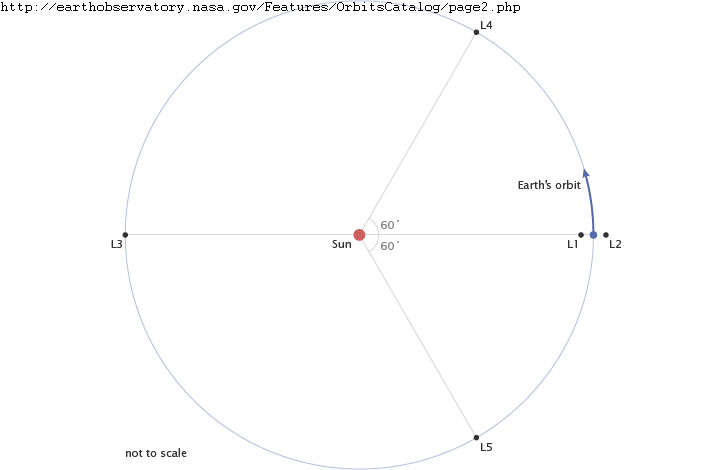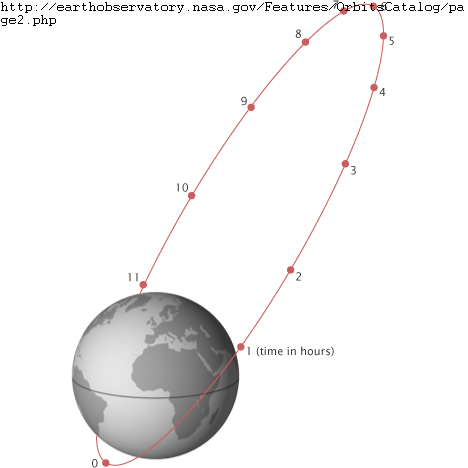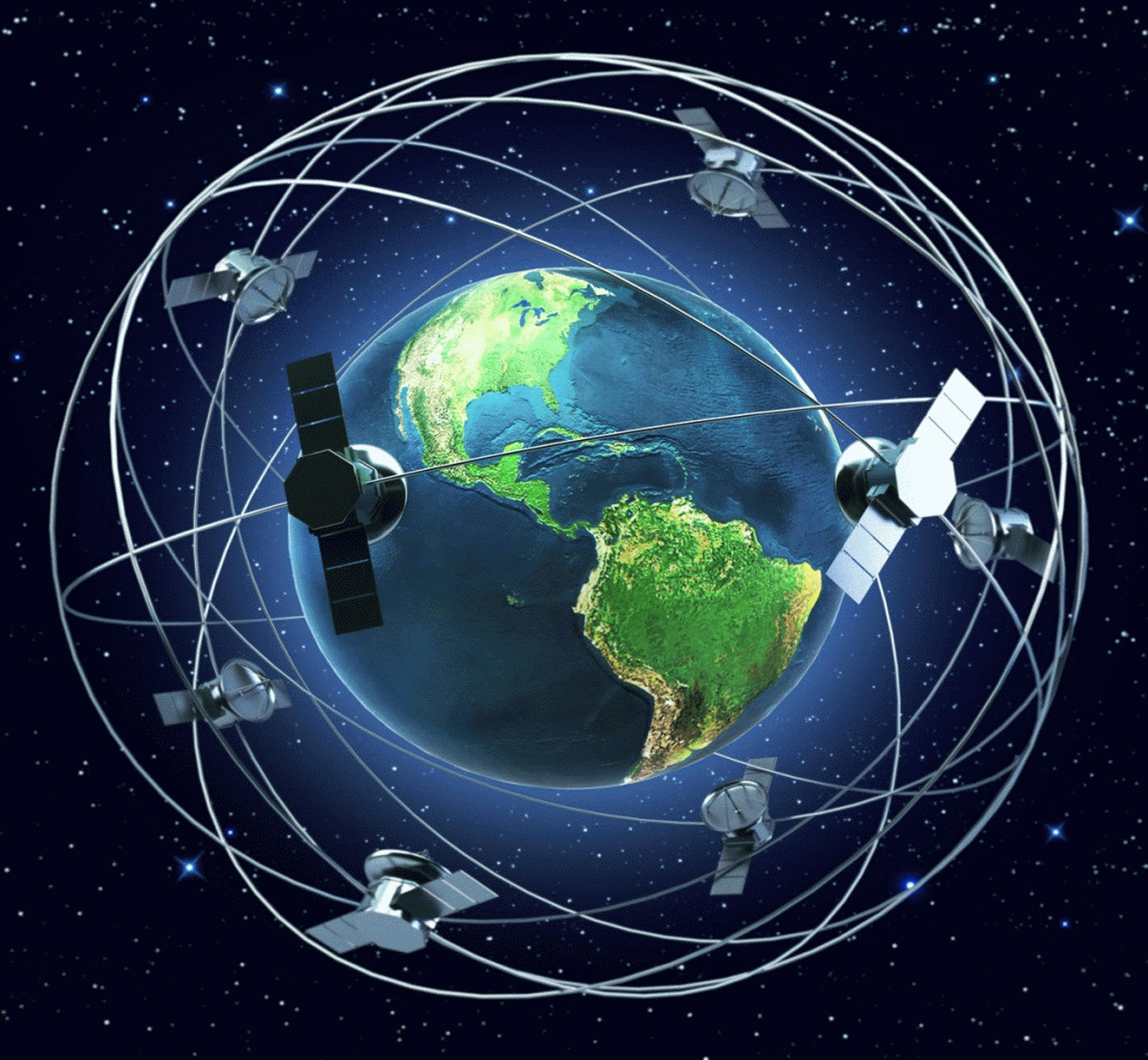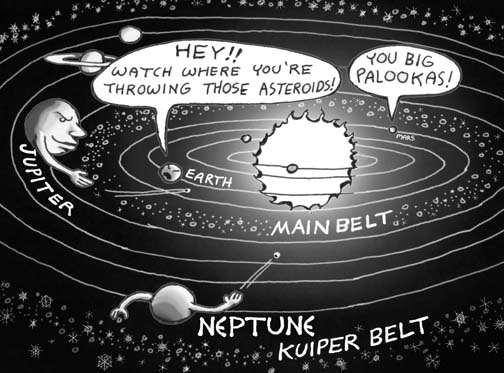Orbits
There are three
major types of Earth orbits
High Earth Orbit -
Lagrange Points

As the name suggests these orbits
are very far away from the
surface of the Earth.
These orbits are useful for weather
satellites because they can be geosynchronous
which means they are constantly over the same
geographical location.
There are five special 'sweet spots' in this orbit
range called Lagrange Points.
L4 and L5 are the most stable, and they lead and
follow the Earth at a sixty degree angles.
L1 and L2 are the closest to Earth and take a lot
of calculations and monitoring to keep in stable
orbit. L3 is on the other side of the sun,
making it very difficult to communicate with
anything orbiting there.
Molniya Orbit

These orbits are closer to the surface of the
Earth.
There are two notable orbits in this range: The
semi-synchronous orbit which takes only 12 hours
to complete, and the Molniya orbit which also only
takes 12 hours to complete a single trip, but it
is very eccentric-meaning it does not follow
a circular path.
The semi-synchronous orbit passes over the same
geographical location twice every day which makes
it ideal for Global Positioning System
satellites.
The Molniya orbit is elliptical so it passes earth
really close on one side, and far away from the
other. This orbit is best for observing the
poles which are difficult to see otherwise.
Low Earth Orbit
Sun-synchronous
Orbit

This orbit
range is the closest to the surface of the
Earth. This is where the majority of the
science satellites aimed at monitoring the
Earth itself are located. The absolute
coolest orbit in this range is the polar
orbits that passes each pole. Because
the orbit is so close to Earth the satellite
will actually stay in the same zone with each
pass. It can always be five 'o clock on
that satellite! This orbit is also
sun-synchronous which means that the area it
is observing is always in daylight.



Home
Satellites
Near
Earth Objects
Bibliography
|